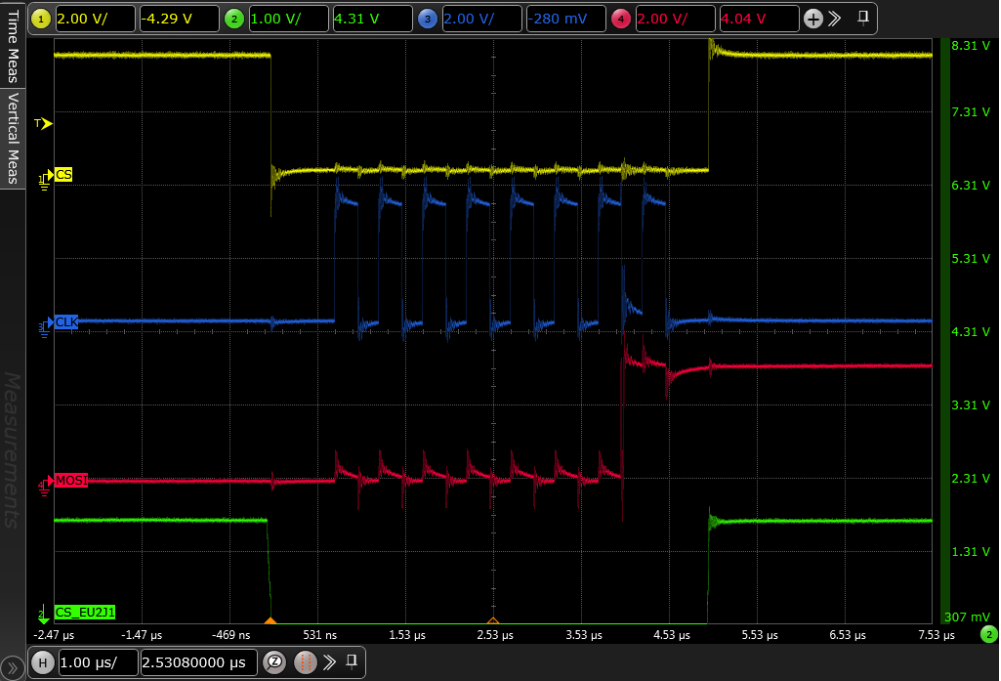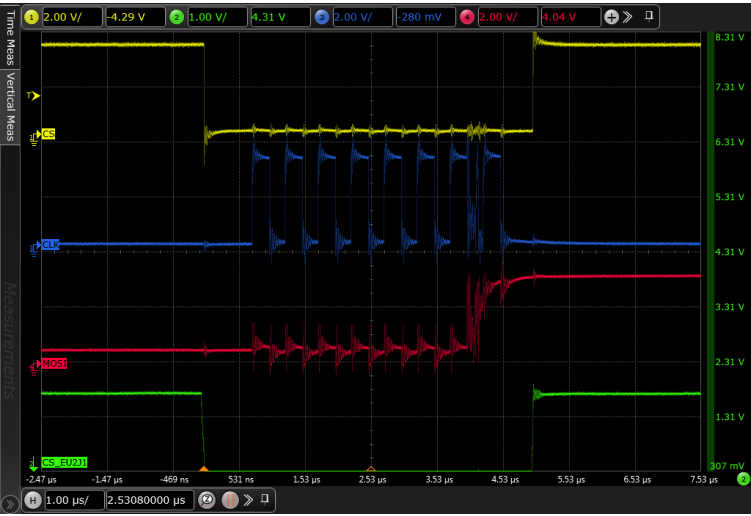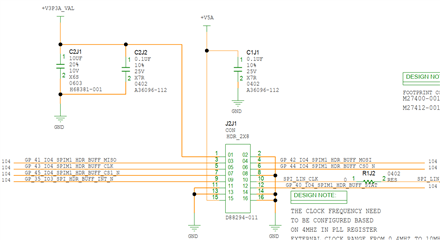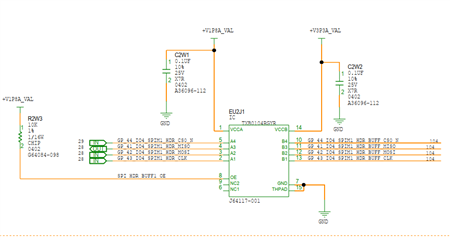Other Parts Discussed in Thread: TXU0304, SN74AXC4T774,
Hi Team,
Good day! Posting this in behalf of the customer. Here it is.
We are working on TXB0104RGYR in one of our design
we found some bouncing effect on output pin 10.
I mean, signal is not consistence w.r.t input signal.
if the device is in idle, its output is fine and same as input, incase if we try to probe the signal/connected to another device the output is bouncing.
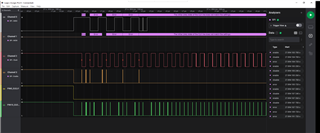
Best regards,
Jonathan


